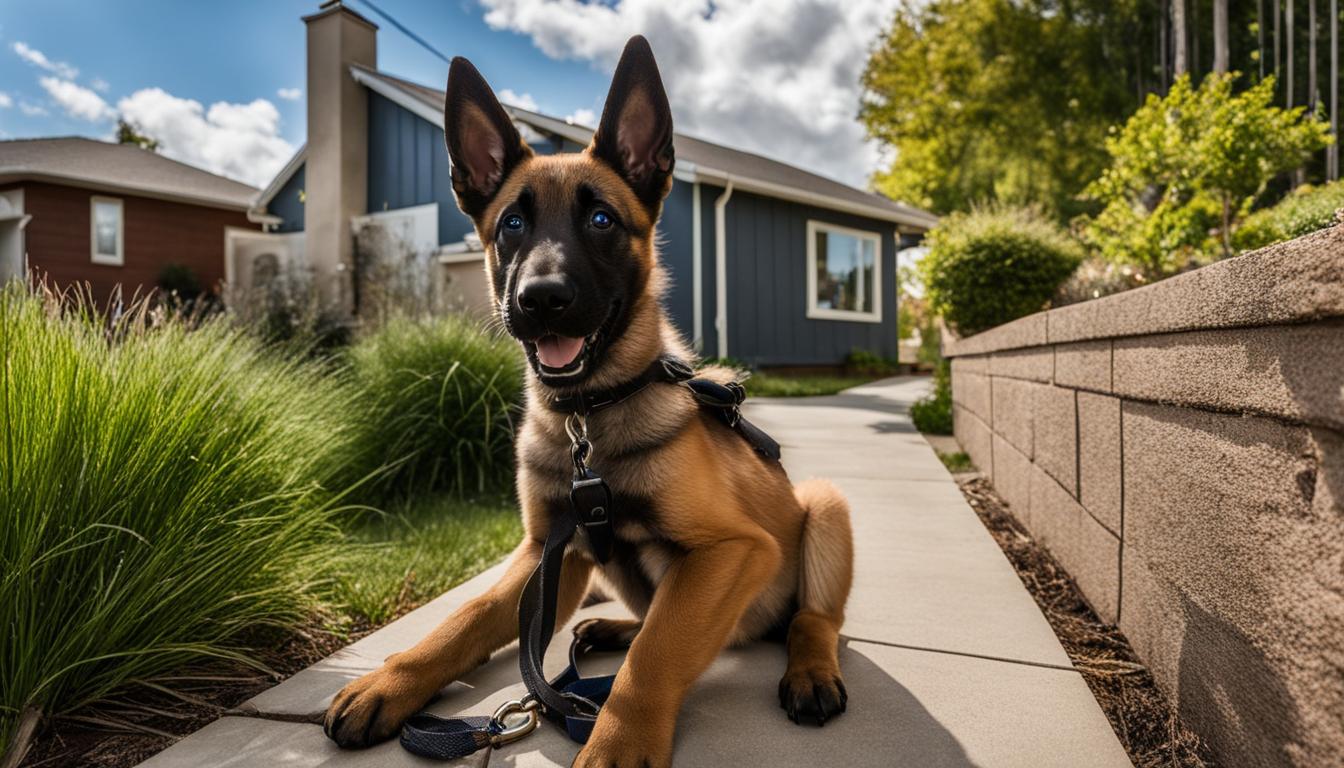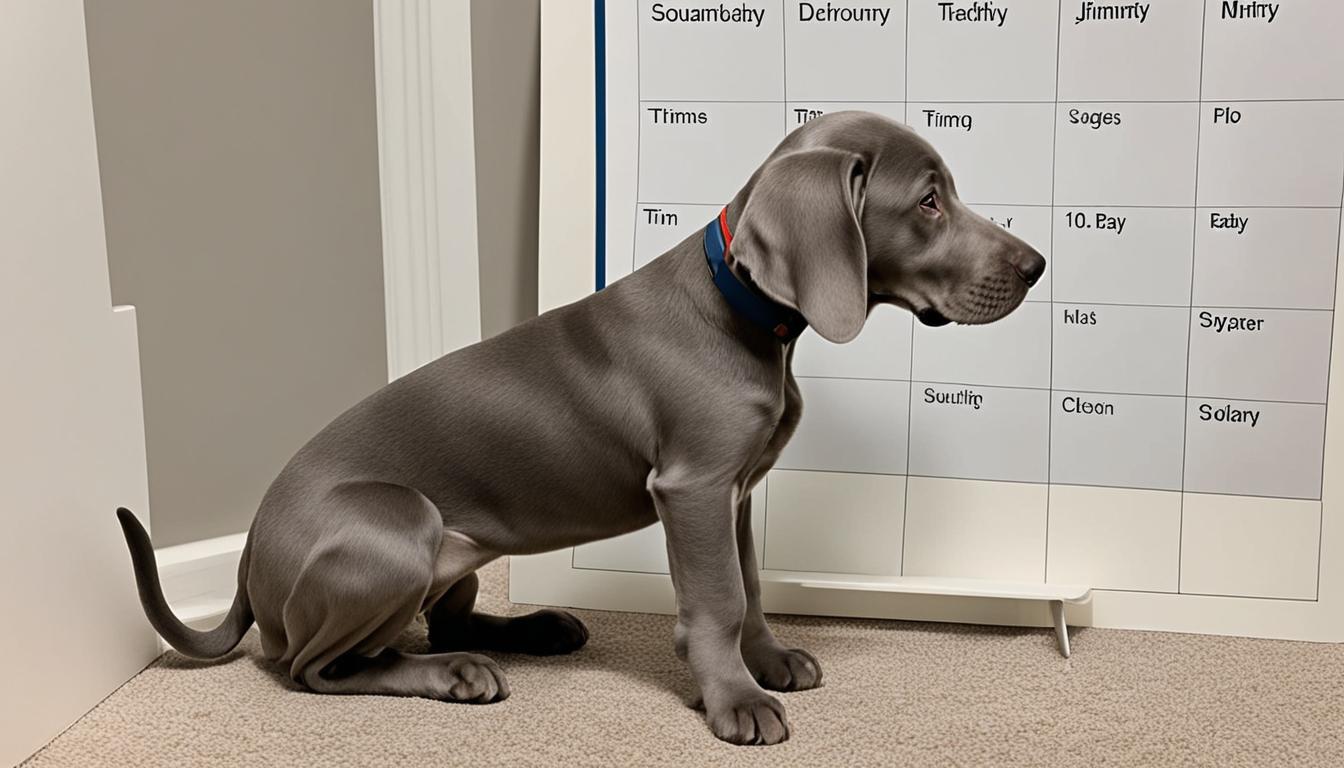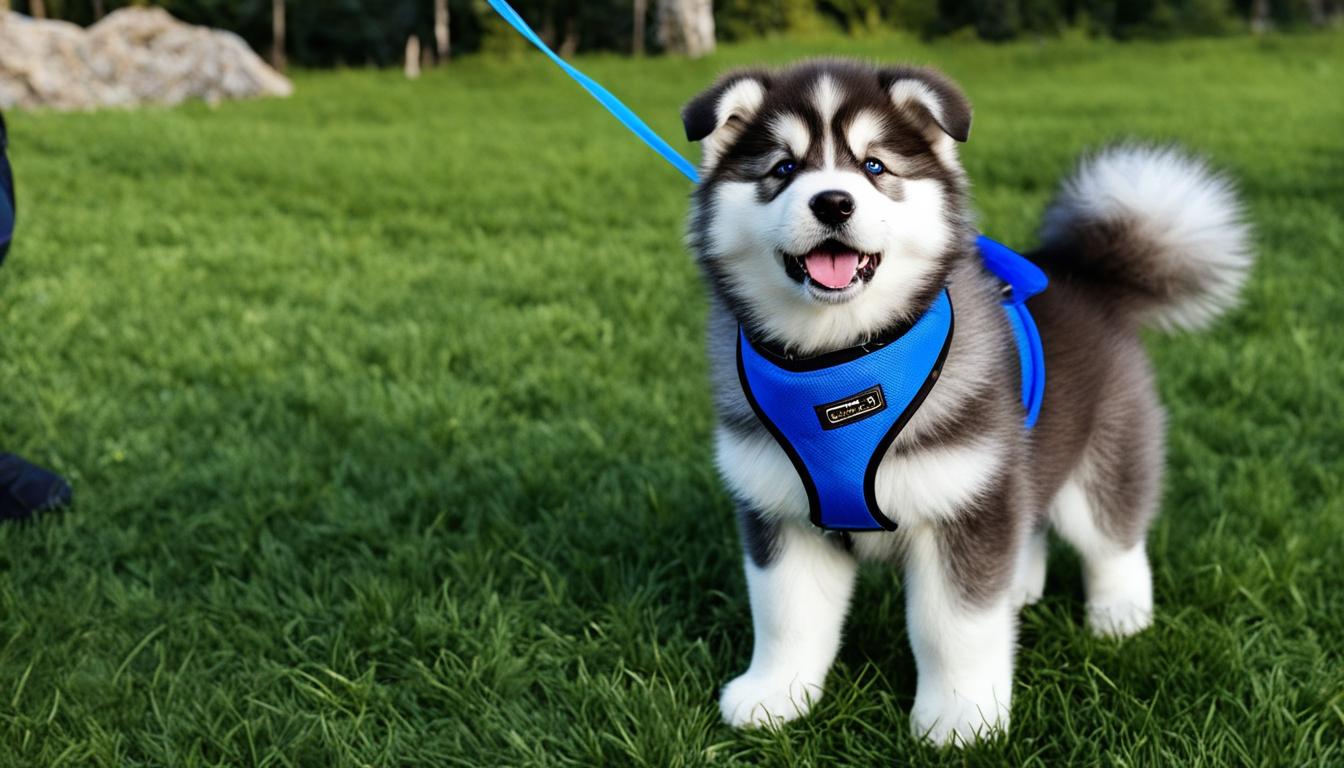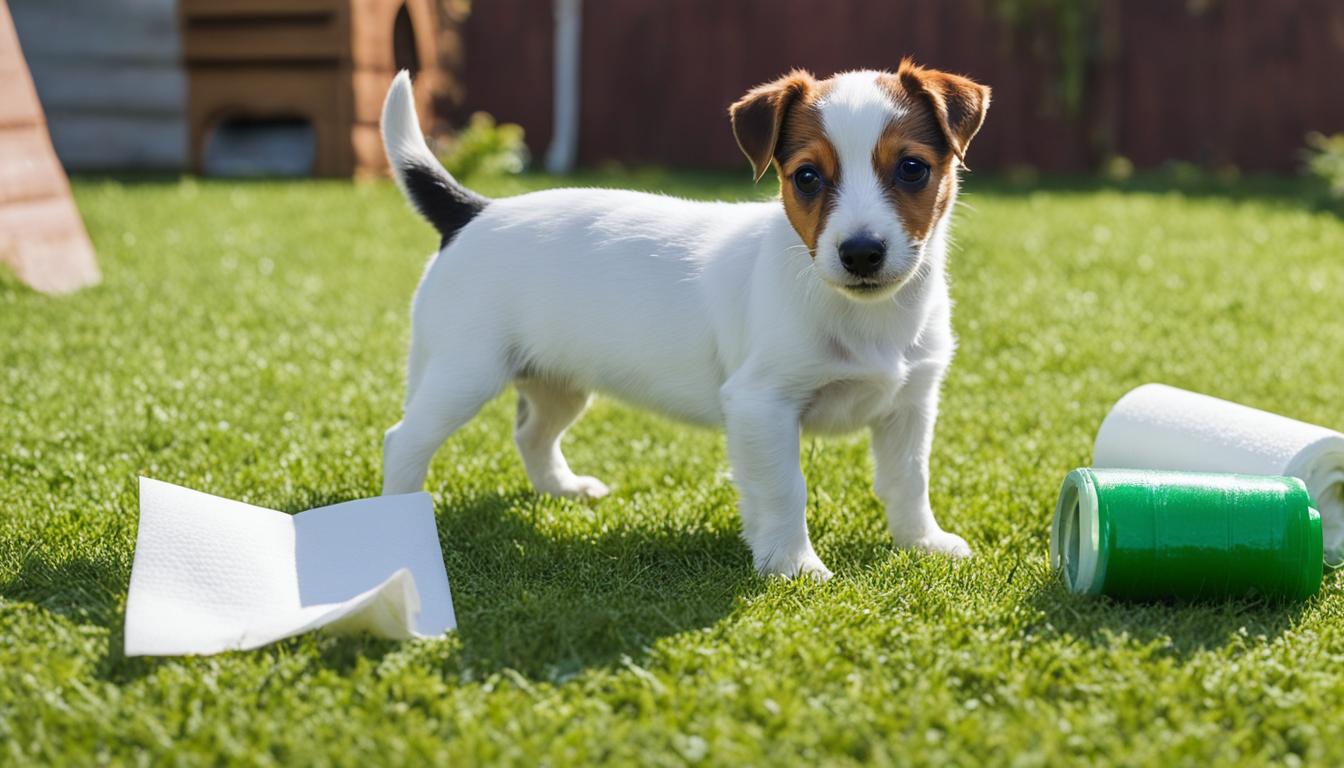Embarking on the journey of housebreaking your Belgian Malinois puppy may seem daunting, but with the right puppy training tips, it can become a bonding experience filled with growth for both you and your new companion.
Obedience training isn’t just about instilling discipline; it’s also about communication and understanding. As you set forth on this path, employing effective potty training techniques will pave the way for a smoothly run household.
From picking out the perfect treats to establishing a consistent routine, every step you take is a building block towards an obedient, well-trained pet. This guide is crafted to support you in your training endeavors, giving you the tools and knowledge you need to foster a conducive environment for learning.
So, roll up your sleeves and prepare to delve into the rewarding process of teaching your Belgian Malinois the essentials of proper behavior.
What Are The Benefits of Potty Training Your Belgian Malinois Puppy?
Embracing the journey of potty training your Belgian Malinois puppy is not just about keeping your living space tidy; it’s a step towards fostering long-term behavioral success. This systematic habit brings into play the essence of responsible dog ownership and cultivates a foundation for a positive pet relationship. When you avoid the frustrations of house soiling, the bond you share with your pet strengthens significantly.
Effective potty training shapes a harmonious living environment, and instills confidence in your puppy, allowing controlled and expected bathroom behaviors. The benefits span from maintaining a hygienic space to minimizing the emotional stress that unwanted accidents can bring. Assess how a structured potty training schedule can result in a well-behaved dog with a consistent routine:
- Rewards-based training: Developing a reward system for potty success story not only supports your puppy’s behavior but administers a sense of achievement and encourages repeat performance.
- Diet and exercise management: Potty training aids in regulating your puppy’s biological schedule, aligning it with their dietary and exercise regimen, preventing indoor mishaps.
- Decreased likelihood of shelter relinquishment: Dogs with house soiling conflicts often find themselves in shelters. Training your Belgian Malinois early can drastically reduce this risk, ensuring they stay part of your family.
As you contemplate the comforts and cleanliness of your home, and the welfare of your beloved pet, remind yourself that avoiding house soiling is a manifestation of the care and thoughtfulness you invest in your role as a dog parent. Utilize resources like crates and puppy pads wisely, and you’ll pave the way for a pet that’s disciplined and jubilant, with habits that will last them a lifetime.
How to Potty Train a Belgian Malinois Puppy (Step-by-Step)
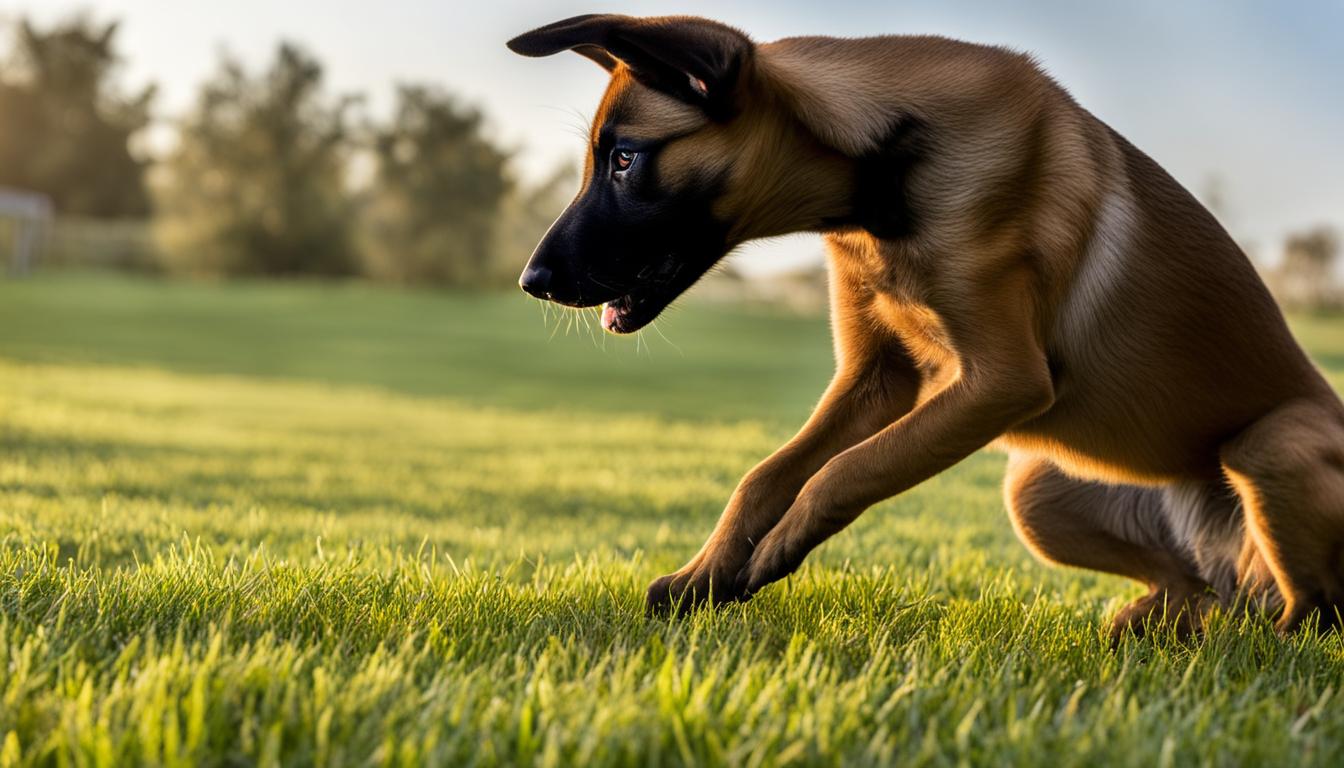
Embarking on potty training your Belgian Malinois puppy might seem daunting, but with structured initial puppy training steps and a dash of patience, you’ll be well on your way to developing good habits in no time. Let’s dive into a step-by-step approach designed to foster a comforting potty training routine for both you and your furry friend.
Before we get into the specifics, it’s vital to remember that every puppy is unique, and their learning pace will vary. Consistent reinforcement, communication clarity, and behavioral encouragement are keys to your success. Moreover, understanding your puppy’s body language will significantly assist in preventing any mishaps. Now, let’s move on to the actionable steps.
Step 1: Master The Basic Principles of Potty Training a Puppy
To initiate the potty training journey, establish a strong foundation by developing good habits early on. Utilize positive reinforcement techniques to instill behavioral encouragement, rewarding your Belgian Malinois puppy for each success. This positive association with the correct behavior is essential for long-lasting results.
Step 2: Choose The Designated Puppy Potty Area
Selecting an elimination area and maintaining it as the consistent potty location is critical. This step trains your puppy to understand where it is appropriate to relieve itself. Remember to praise your puppy amply when they use this area to strengthen the good behavior.
Step 3: Set a Potty Break Schedule
Young puppies have limited bladder control. Thus, establishing a potty training schedule congruent with the age of your Belgian Malinois is vital for accident prevention. Regular, controlled potty trips can significantly aid in bladder strength development.
Step 4: Look for Visual Cues
Interpreting puppy body language is a pivotal skill. Recognizing signs like sniffing or circling that signal the need to potty allows you to act promptly, preventing accidents and reinforcing where it is acceptable to go.
Step 5: Take Your Puppy to The Designated Potty Area Frequently
Consistency in potty area visits teaches your puppy the right spot. Initially, you may need to take them out frequently, sometimes every half-hour, to build this habit.
Step 6: Use a Leash and Collar or Harness
Controlled potty trips facilitated through leash training are essential in teaching your puppy not only about potty habits but also about walking etiquette.
Step 7: Avoid Accidents at All Costs
Implementing containment strategies, like a crate or a penned area, when not supervising your puppy can drastically reduce the number of accidents during the training phase.
Step 8: Clean up Any Accidents Thoroughly
Efficient accident cleanup is crucial in removing smells to avoid re-soiling. Always use an enzymatic cleaner that completely eliminates the odor.
Step 9: Choose a Specific Word for Potty Trips
For communication clarity, select training commands like “potty” or “outside” and use them consistently. This will help your puppy associate these commands with the action of eliminating in the correct place.
Step 10: Stick With a Routine
A dog thrives on regularity and structure. Maintain a routine for all their daily activities, particularly potty breaks, to aid in their potty training success.
Step 11: Confine The Puppy When You’re Unable to Supervise Them
Employing safe confinement practices through crate training can prevent your puppy from getting into mischief and assist in reinforcing proper potty habits.
Step 12: Stay Consistent and Patient for Successful Potty Training
Patience in training coupled with consistent reinforcement, even when challenges arise, lays the groundwork for a well-trained pup.
Step 13: Focus on Praising Your Puppy
Never underestimate the power of praise and positive reinforcement when your puppy succeeds in eliminating in the right location.
Step 14: Gradually Increase The Time Between Potty Breaks
As your puppy’s bladder control improves, you can slowly extend the time between outings, enhancing their bladder strength development and working towards increased potty intervals.
| Age (Months) | Expected Bladder Control (Hours) | Suggested Potty Break Interval |
|---|---|---|
| 2 | 2 | 1-2 hours |
| 3 | 3 | 2-3 hours |
| 4 | 4 | 3-4 hours |
| 5+ | 5+ | 4-5 hours or as needed |
Remember, keeping a positive outlook and working with your pup’s natural inclinations will make this process rewarding for both of you. With each step you take, you’re on the path to providing your Belgian Malinois with a healthy and disciplined start to life.
Equipment You Need Before Starting Potty Training a Belgian Malinois Puppy
Embarking on the journey of potty training your Belgian Malinois puppy is significantly easier when you are armed with the necessary potty training supplies. A mix of essential items and helpful extras can make the process smoother for both you and your furry companion. Let’s dive into the indispensable puppy training gear and housetraining essentials you’ll need to start on the right paw.
A properly sized crate is fundamental in housetraining. It capitalizes on your puppy’s instinct to avoid soiling their sleeping space and helps to prevent accidents when you’re not around to supervise. For times when outdoor access isn’t an option or you’re in the initial stages of housebreaking, puppy pads provide an appropriate indoor alternative.
During the housetraining phase, ensuring controlled and safe outings is crucial. This calls for a comfortable collar or harness and a sturdy leash. Positive reinforcement accelerates the learning curve, so having a stash of treats handy for immediate rewards is beneficial.
Despite your best efforts, accidents can happen. Having an enzymatic cleaner is vital; it not only cleans but also eliminates odors that might encourage your puppy to revisit the scene of the mishap. In addition to housetraining supplies, keeping your Belgian Malinois engaged with a variety of toys and bones prevents unwanted behavior—idle paws are the house-trainer’s foil.
- Properly sized crate to discourage accidents
- Puppy pads for indoor training or emergencies
- Collar or harness matched with a leash for controlled walks
- Treats for immediate positive reinforcement
- Enzymatic cleaner for effective accident cleanup
- Toys and bones to occupy and distract from mischief
Gather these essentials before you begin, and you’ll set the stage for a successful and efficient potty training experience. Remember, patience paired with the right tools will lead you and your Belgian Malinois puppy to housetraining triumph!
Indoor Potty Training Vs. Outdoor Potty Training

As you embark on the challenging, yet rewarding journey of training your puppy, one of the crucial decisions you’ll face is choosing between indoor potty training and outdoor potty training. This comparison of potty training techniques is not only a matter of preference but often hinges on your living situation, schedule, and the needs of your Belgian Malinois puppy.
Indoor training strategies often involve the use of puppy pads, which can be a lifesaver if you’re living in an apartment or an area with harsh weather conditions. These pads can also be a boon for those who work long hours and cannot take their puppies outside frequently. On the other hand, outdoor potty training gives puppies the advantages of indoor and outdoor elimination, encouraging them to go in nature right from the start—a habit that can lead to more natural behavior and easier maintenance in the long run.
Let’s weigh the pros and cons:
| Indoor Potty Training | Outdoor Potty Training |
|---|---|
| Convenient for high-rise living or inclement weather | Promotes natural elimination habits |
| Ideal for owners with unpredictable schedules | Reduces risk of indoor accidents long-term |
| Allows for immediate elimination, reducing potential accidents | Enables puppies to get more exercise and stimulation during potty breaks |
| May require a transition phase to outdoor training | Demands consistent scheduling and immediate access to an outdoor area |
Regardless of the method you choose, remember that patience, regularity, and clear communication are the backbone of any potty training technique. Whether cozy inside or under the open sky, each puppy will find its rhythm against the backdrop of your support and guidance.
Consistency and positive reinforcement remain key, no matter where your puppy learns to answer nature’s call.
As you reflect on these options, consider the long-term habits you’re hoping to instill in your Belgian Malinois. Do you envision leisurely walks where your pup takes care of business, or are you prepared for a more flexible arrangement that caters to indoor elimination? Every puppy, much like their owner, is unique, and so should be their potty training plan.
- Evaluate your living situation and schedule.
- Consider your puppy’s needs, frequency of needing to go, and ease of access to the outdoors.
- Decide on a consistent method and stick with it, employing lots of praise and rewards.
Crafting a tailored approach with these thoughts in mind will not only foster independence in your puppy but also forge a trusting relationship between you and your new companion.
Crate Training Vs. Pad Training a Belgian Malinois Puppy
When you decide to bring a Belgian Malinois puppy into your home, understanding the nuances of housebreaking is imperative. It’s the cornerstone of a well-mannered companion, and you’re likely weighing the crate training benefits against the pad training convenience. Both methods cater to different lifestyles and offer a range of advantages, making them viable training alternatives depending on your specific circumstances.
Let’s delve into crate training. Utilizing a dog’s instinctual preference for a den-like space, crate training fosters a sense of sanctuary for your pup. Moreover, it subtly teaches them to hold their bladder. This is because dogs naturally avoid soiling their living spaces. As such, crate training is harnessed to encourage your Belgian Malinois to develop bladder control, yielding an excellent benefit of creating a disciplined elimination habit that aligns with your daily routine.
Conversely, the convenience of pad training cannot be understated, especially for high-rise dwelling urbanites or those coping with extreme weather. Pads offer a specific, predictable spot indoors where your puppy can relieve itself. This can be ideal when you’re unable to frequently take your puppy outside or if you’re starting training during a particularly harsh winter.
- Crate Training:
- Imitates a natural den environment creating a comfort zone.
- Encourages bladder control and prevention of nocturnal accidents.
- Creates a personal safe space for your puppy, reducing anxiety.
- Offers the benefit of doubling as a transportation method.
- Pad Training:
- Provides a quick and easy solution for immediate puppy needs.
- Ensures convenience for apartment living with limited outdoor access.
- Facilitates an initial training step for later outdoor training.
- Allows flexibility in scheduling, accommodating the busy pet owner’s lifestyle.
Ultimately, the choice between crate and pad training hinges on your long-term goals and current lifestyle. Some families blend both methods, utilizing pads for immediate relief when the puppy is alone and crates for overnight security. Whichever path you choose, consistency and patience are key in nurturing a well-trained Belgian Malinois.
Remember that training isn’t just about convenience; it’s about finding a method that works harmoniously with your puppy’s instincts and your life. As you reflect on the perks of each technique, envision the future with your furry companion and select the training solution that promises mutual happiness and comfort.
Frequently Asked Questions About Potty Training a Belgian Malinois Puppy

Embarking on the journey of potty training your Belgian Malinois puppy can lead to a myriad of questions. To help guide you, we’ve compiled a list of commons queries along with advice to navigate this critical phase, ensuring the potty training timeline aligns with age-appropriate training techniques and sets the stage for a well-adjusted companion. Know that expected training duration can vary, but understanding the basics is key to overcoming potty training challenges.
How Long Does It Typically Take to Potty Train a Belgian Malinois Puppy?
The potty training timeline varies, with most puppies grasping basic concepts within 4 to 6 months. However, factors such as behavioral correction techniques and consistency can influence the duration.
What to Do if Your Belgian Malinois Puppy Won’t Pee Outside The House?
Addressing outdoor elimination reluctance entails reassessing scheduling potty breaks and creating a comforting environment to ease outdoor potty anxiety.
Should You Use Treats When House Training a Belgian Malinois Puppy?
Positive reinforcement and treat-based incentives can be potent when used judiciously, fostering a positive relationship with the potty training process.
Is It Better to Use Puppy Pads or Go Straight to Outdoor Potty Training for a Belgian Malinois Puppy?
Assessing your situation is crucial for assessing best potty training practices. Puppy pads may offer convenience, but it’s ideal to acclimate to outdoor elimination when possible.
What Should I Do if My Belgian Malinois Puppy Does Not Seem to Be Learning to Potty Train Correctly?
Troubleshooting potty training might involve revisiting training frequency and techniques, or seeking professional advice.
What Should I Do if My Belgian Malinois Puppy Starts Accidents in The House?
For effective accident response, promptly clean the area and reinforce training without punishment to avoid further behavioral repercussions.
What Are Some Common Mistakes That Are Made When Potty Training a Belgian Malinois Puppy?
Avoiding training errors like inconsistent routines or overreaction to accidents helps to sidestep common potty training pitfalls.
What Are Some Potential Consequences of Not Potty Training a Belgian Malinois Puppy?
Impacts of inadequate potty training may include persistent soiling and stress, leading to long-term behavioral issues.
What Can I Do to Help My Belgian Malinois Puppy Feel More Comfortable Going Potty Outside?
Help ease your puppy into acclimating to outdoor elimination with routine and patience, aiding in easing outdoor potty anxiety.
How Old Does My Belgian Malinois Need to Be Before I Can Start Potty Training?
You can begin potty training readiness as early as 8 weeks, setting the stage for successful behavioral patterns.
How Often Should I Take My Belgian Malinois Puppy Outside to Go Potty During The Day?
Accounting for your puppy’s age, managing elimination frequency with regular breaks is vital, typically every 1-2 hours for very young puppies.
What Should I Do if My Belgian Malinois Puppy Has an Accident Inside During Potty Training?
When responding to puppy accidents, cleanliness is paramount. Ensure you’re maintaining a clean environment following any mishaps and revisit your training strategy.
Last Thoughts on Belgian Malinois Puppy Potty Training
Embarking on the journey of potty training your Belgian Malinois puppy can feel daunting at first. But rest assured, with persistence and adherence to tried-and-true methods, achieving potty training success is within reach. Remember, the central pillars to a well-behaved pup are patience, consistency, and plenty of positive reinforcement. By keeping these principles at the forefront, you will guide your puppy toward successful housetraining habits that will last a lifetime.
No two puppies are the same, and this holds true for the intelligent and spirited Belgian Malinois. This breed’s keen learning ability can make potty training smoother, but individual personalities may call for minor adjustments to your approach. Stay observant, responsive, and agile in your methods, always ready to celebrate the incremental victories along the way. A well-trained Malinois is not only a joy but also a testament to your dedication as a responsible pet parent.
As you wrap up this instructional guide, retain a heart of encouragement for your furry companion. Each new day is an opportunity to strengthen the bond you share and reinforce the positive behaviors you desire. Set your puppy up for a lifetime of triumphs, starting with these early stages of potty training, and enjoy the clean, orderly home and deep connection that your efforts will undoubtedly bring forth. Here’s to many happy years with your disciplined and loving Belgian Malinois by your side!

